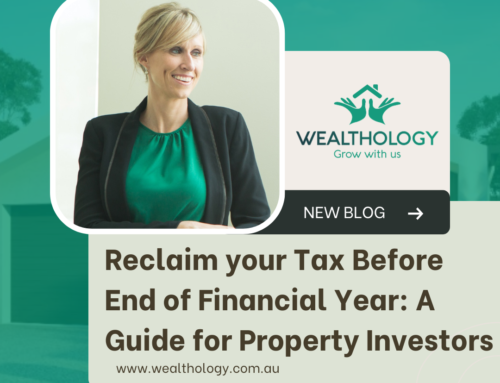Property Prices Increase in October – Despite Housing Crash?
This time of year, is the season to be giving, and whilst many are putting the fear of god into us about the so-called property crash (which they’ve been talking about for 12+ months now) I’m here to tell you exactly why it won’t happen.
Undoubtedly, the Australian property market is facing headwinds, but that is nothing new.
Data obtained by our team outlining asking prices for established houses listed indicates a different narrative to the one portrayed in the media currently.
Did you know that over the past 12 months, Sydney has been the only city to record a negative result in its annual price change?
Interestingly, Australia’s other capitals reported increases in median house prices over October, with Adelaide up by 3.0%, Perth by 0.9%, Melbourne by 0.4% and Brisbane higher over the month by 0.3%.
Furthermore, Brisbane house prices remain significantly higher than they were in October 21, with an 18.8% price increase.
Not exactly a property crash, hey?

At the beginning of 2021, the property market was booming. The market since then has slowed down, and here’s why:
Rising Interest Rates
The catalyst that triggered the shift in dynamic in the market. Rising interest rates directly affect how much money people can borrow from their banks. The higher the interest rate, the fewer people can afford to borrow. The properties in the higher price bracket are the first properties affected when this happens.
A Dip in Consumer Confidence
The most significant factor of both boom-and-bust markets is consumer confidence; after all, the market is genuinely only governed by what someone is willing to pay.
Consumer confidence has dipped with fears of rising interest rates, inflation and living costs. As a result, buyers are being more cautious, and many are taking a wait-and-see approach, while sellers’ confidence is more fragile.
Affordability and Cost of Living Pressures
The impetus of low-interest rates allowing borrowers to pay more for housing has dissipated. With property values now 20%+ higher than at the start of the cycle, many are struggling to reach the borrowing capacity required for the new housing thresholds, particularly in places like Sydney and Melbourne.
Additionally, the cost of goods and services is generally higher across the board than last year, putting extra pressure on household budgets.
The three main challenges currently being experienced by the market are typical and relatively predictable.
Throughout this phase, we generally see a slight decline in values compared to the gains from prior years, followed by a stabilisation period. This stabilisation period allows interest rates to fall again, wages to grow, and inflation to return to normal parameters.
The Reasons Property Prices Won’t Crash
There are strong fundamentals as to why the Australian residential property market won’t crash.
Once you take the fearmongering from the media out of the picture, you can clearly understand the fundamentals.
Unemployment is at Record Lows
Unemployment is at historic lows, meaning anyone who wants a job can’t get one. The higher percentage of people employed, the less likely you’ll have households experiencing mortgage stress. Low unemployment rates remain potential for the foreseeable future.
Shortage of Good Housing Stock
There is a severe shortage of good housing stock; Wealthology clients are a testament to the availability of good quality housing options, with some clients waiting weeks for approved opportunities to surface.
Much of the backlog is due to one or two reasons ;
- Redtape in the initial council planning process, slowing down approvals.
- Good quality properties in good locations tightly held by owner-occupiers.
Yields Remain High for Property Investors
There will be no mass exodus from the market whilst rental yields remain strong. Right now, Australia is experiencing a severe shortage in housing supply, meaning that asking weekly rental amounts are skyrocketing up to 20% per year, making investing in property in some cases very attractive from a cash flow perspective.
Australians are in Front of Their Home Loans
Recently the chief executive of Commonwealth Bank said that 75% of their home loans are approximately two years ahead on mortgage repayments.
This is an excellent indication of the financial health of Australian households. Furthermore, data indicates that Australians have a $250,000,000 buffer in aggregate savings, much of it in offset accounts.
Australia’s Banking System is Strong and Strict
Whilst internally in the office, one of our biggest gripes is the speed at which the banks seem to move. However, that is generally due to the number of policies and regulations required before approving somebody for a loan.
These strict lending criteria safeguard the housing market from crashes similar to the GFC property market crash in the U.S because there are few non-performing loans in Australia.
Today’s Prices Will One Day Look Cheap
The fundamentals discussed will almost certainly put a solid floor under housing prices, and right now, there is an opportunity for investors with a long-term view.
Property prices may have dropped slightly in the past months, creating a small discount in some instances. However, the opportunity lies in something other than purchasing a property for a mere $10,000 less than three months ago.
The opportunity lies in the fact that property investors can now secure A-Grade opportunities.
With less demand in the market right now, now is the time to purchase the crème de la crème of Australian real estate and cash in when the cycle moves to its next stage.
Looking back in three years, the price you would pay for the property today will look cheap.
Whether you’re a beginner or an experienced investor, you need a mentor who takes a holistic approach to your wealth creation, and that’s precisely what you get from our team.
Contact me directly to discuss your financial future – leonie@wealthology.com.au





